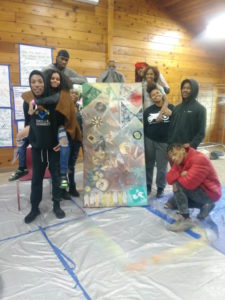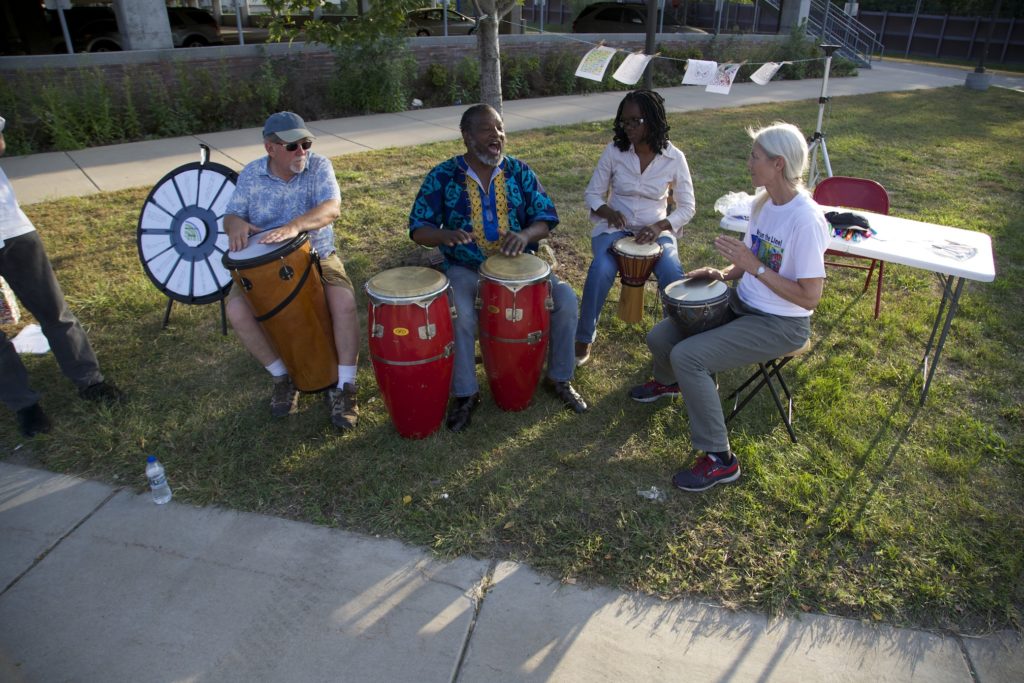Using Performance Art as a Means of Engagement
Artists are everywhere, on every block and in every community. Finding the opportunities for artists to share their creativity and networks can strengthen community bonds, build relationships, and help a community imagine what’s next. That is what Springboard for the Arts found from 2011 to 2014, working with the City of St. Paul and Twin Cities Local Initiatives Support Corporation along the Green Line light rail construction during the Irrigate project, which trained artists in partnership building, creative placemaking, and funded their creative projects. That model of artist-led community development has now been used in advance of construction for Cultivate Bottineau, a project coordinated by Hennepin County Bottineau Community Works and Springboard for the Arts, partnering with the communities along the proposed Blue Line light rail line. Through training, technical support, and funded projects, Cultivate Bottineau is bringing out the artists in the communities of North Minneapolis, Golden Valley, Robbinsdale, Brooklyn Park, and Crystal, to share a vision for their communities, and to cultivate creative people power. During the first year of Cultivate Bottineau over 40 artists participated in the creation of over 25 arts events along the Bottineau Corridor.
Sowing the Seeds of Expression

What is possible when young people in a community are engaged to express their talents? Amazingness. That’s what resulted when the City of Brooklyn Park partnered with 14 young artists to create murals and performances through the One Mic + One Canvas = Open Minds project supported by Springboard for the Arts. Starting as an effort to lift and activate youth voices, the project created a platform through which young artists in Brooklyn Park’s Zanewood neighborhood can have spaces and places to showcase their talent.
With support from Laura Stigen, arts and engagement specialist at the City of Brooklyn Park, youth led the conception, development, implementation, and performance of the project. They created an 8’x16’ mural gathering their collective stories into a backdrop used for their stage performances. Stigen notes, “It’s incredible for adults in the community to see young people doing such powerful work.”
The young artists also created a second “traveling canvas” which symbolically represents youth voices at community events. The traveling canvas is often present at city council meetings or other public meetings when youth representatives cannot be present. Stigen reflects that having youth-generated art present in a space where adults typically make decisions is an effective reminder that youth are present in the community and ought to have a seat at the table.
The City of Brooklyn Park is invested in creating public art. It has created an art plaza near a hub of the future Blue Line to create a space where the community can proudly display art.
The Zanewood Recreation Center is the main hub of creativity and arts for youth in Brooklyn Park right now. There were not many other spaces for youth to engage in creative crafts and performance publicly. Springboard’s Cultivate project opportunity changed that. The city was inspired to showcase the art at the Brooklyn Park Library. Youth that are involved in the project see this opportunity as the starting debut and are looking forward to continuing performances along different stops that would be a part of the Blue Line.
The collaboration between the city and young artists for the project also created connections. The young artists now see themselves invited to the library’s teen technology space and studio. Some of the young artists have gained professional connections. One young person became employed by the City of Brooklyn Park after being engaged in the project. Representatives from various departments within the city, including Parks and Recreation and Community Engagement and Communications, attended the art showcase to support young artists.

Celebrating Community Art on the Line
For Mira Kehoe, there is no question that a core function of art is to celebrate the beauty and vibrancy of life in a neighborhood. Kehoe’s Cultivate project featured Brazilian music with Xibaba; an African drum circle with Babatunde Lea; visual art created by Randy Burrows, an artist from the Bahamas; and community art activities. “The main goal was to spread joy,” says Kehoe.
An adjunct professor at Hamline University, Kehoe draws from a variety of artistic disciplines to create art. She is a musician and a theater and jazz artist who engages in creative placemaking. With a background of teaching voice, speech, dialects, and acting at the University of Minnesota, the University of Utah, Hamline University, and the Guthrie Theater, Kehoe says she ventured into social justice through public art in recent years.
“One of the things I do is create questions based on community needs,” she says. At each of Kehoe’s public performances, there were tables and easels with visuals and maps of the proposed Blue Line expansion areas with an opportunity for people to note concerns and ideas. The feedback from community members was shared with Metro Transit public officials. Keho sees this as a means of drawing out community concerns about the transit project.
Kehoe and her partner artists reached out to two community collaborators, the Family Partnership in Golden Valley/North Minneapolis, and African Career, Education & Resource, Inc. (ACER) in Brooklyn Park. Kehoe writes that “by collaborating with organizations that are focused on developing equity and inclusiveness, and educational and economic opportunity, we hoped to encourage connection through arts activities that explored cultures (Brazil, Bahamas, Africa) with a common thread.”
The participatory methods of Kehoe’s work promoted bridging among different community stakeholders groups. She stated, “If government agencies, nonprofits, and businesses don’t think outside the box in terms of how arts can be useful to them in problem-solving, we have some education to do.” Kehoe’s performances demonstrate that collaborative public art provides an opportunity to help people think creatively when obstacles come up and an opportunity to piece together different perspectives that can typically be thought of as representing opposing viewpoints.
Similarly, from Stigen’s perspective, among the most important impacts of the work was the opportunity youth had to reflect on the personal growth they experienced and the connections they developed with each other. “Working together with 14 other people who all have different artistic goals is not easy,” she states. But the youth banded together to create the mural, which is somewhat of a microcosm of what the larger community is—a variety of small images that fold together to create a larger picture reflective of the full community.
Cover photo: Mira Kehoe’s drum circle. Photo by Phil McGraw from Brown Eye Lens.
